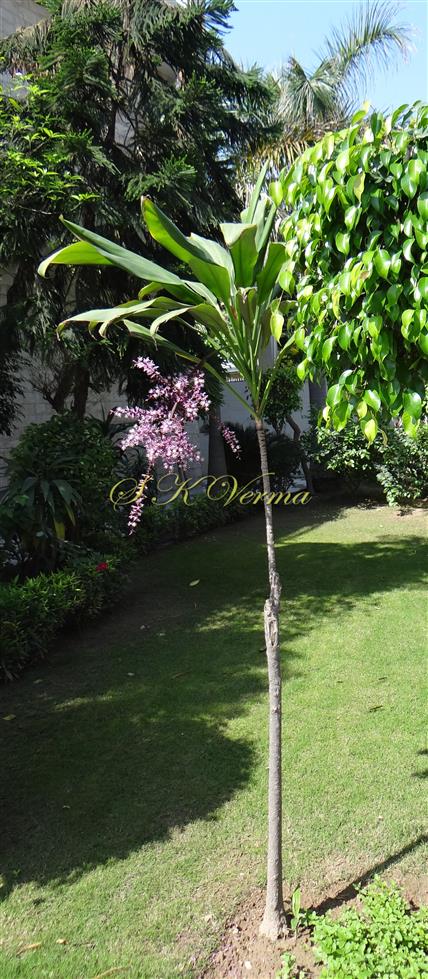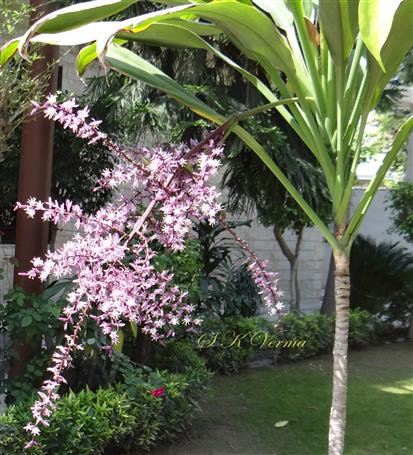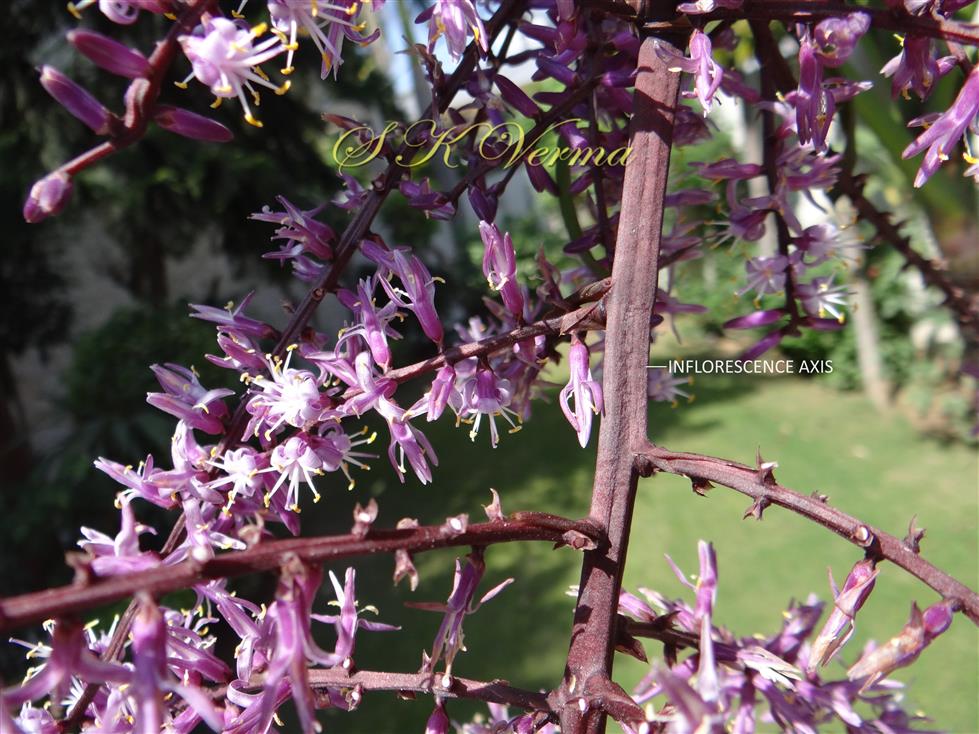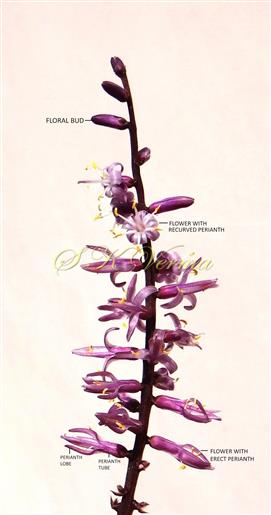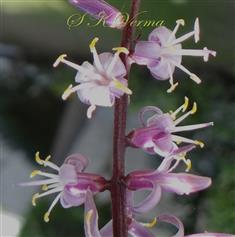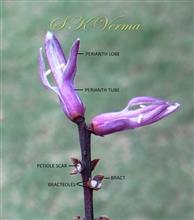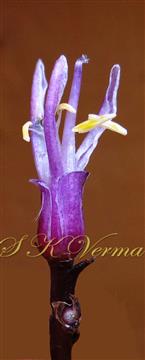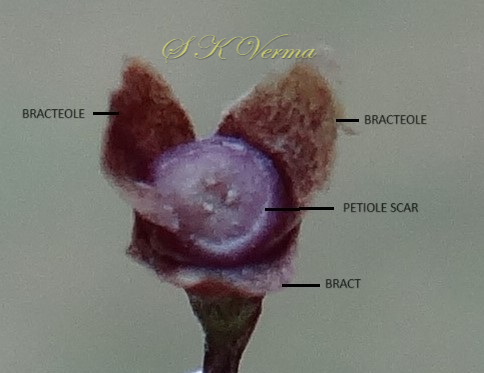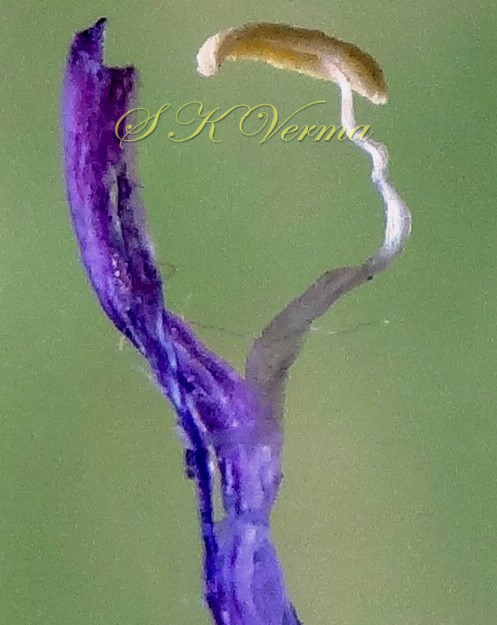CORDYLINE
Cordyline
Comm. ex R. Br., Prodr. Fl. Nov. Holland. 280. 1810; Xinqi & Turland, Fl. China @ eFloras.org 24: 204; Cordyline Commerson ex Juss., Gen. 41. 1789; Bailey, Stand. Cyclop. Hort. 2: 842. 1919; Akhter & Ghazanfar, Fl. Pak. @ eFloras.org p. 7.
Plants tree-like or shrubby. Stems +/- woody, usually few-branched, with conspicuous leaf scars distally. Leaves crowded at apex of stem; petiolate, petiole long, base amplexicaul; leaf blades large, up to 70 cm x 15 cm, linear-lanceolate, elliptic, elliptic-lanceolate to sword-shaped; veins essentially parallel, but with lateral veins branching from midvein in proximal half. Inflorescences arising from axils of distal leaves, usually paniculate, large, dense or open, many-branched. Flowers sessile or shortly pedicellate, pedicels articulate at or near apex; bracteolate, bisexual, usually tubular-campanulate or subcylindric. Tepals 6, in 2 whorls of 3 each, united at base forming a tube, linear-oblong. Stamens 6, inserted in tube or throat of perianth; anthers versatile. Ovary superior, 3-loculed, 2-many (6-20) ovules per loculus; style slender; stigma capitate, small. Fruit capsule or berry, usually many-seeded; seeds black.
23 species
Cordyline fruticosa
Cordyline fruticosa
(L.) A. Chev., Cat. Pl. Jard. Bot. Saigon. 66. 1919; Fl. China @ eFloras.org 24: 204; Convallaria fruticosa L., Herb. Amboin. 16: 1754; Cordyline terminalis (L.) Kunth, Abh. Konigl. Akad. Wiss. Berlin 1942: 30. 1844; Bailey, Stand. Cyclop. Hort. 2: 842. 1919; Parker, For. Fl. Punj. ed. 1: 521. 1918 (Reprint 1973); Akhter & Ghazanfar, Fl. Pak. @ eFloras.org p. 7; Dracaena terminalis L., Syst. Nat.12 (2): 246. 1767; Terminalis fruticose (L.) Kuntze, Rev. Gen. Pl. 2: 716. 1891.
Plants erect, shrubby. Stem simple, sometimes branched, 1-2.5 m tall, 1-3 cm in diameter; ring-like leaf scars present towards apex. Leaves ascending and crowded at apex of stem, petiolate, petiole 10-25 cm long, channelled adaxially, base dilated clasping stem and other leaf bases; leaf blade green, purple-reddish or variegated, 25-40 cm x 4-9 cm, elliptic, elliptic-lanceolate, oblong-lanceolate or narrowly oblong, somewhat coriaceous, smooth, flexible, midvein distinct and raised abaxially, veins frequently unequal, strongly oblique, margin entire, apex aristate. Inflorescences terminal or arising from axils of distal leaves, panicles, 30-60 cm long, branches dense, racemosely arranged; inflorescence axis 4-angled, more or less squarish. Flower buds oblong, reddish. Flowers lilac-white, subsessile, bisexual, usually tubular-campanulate or subcylindric, ca. 1.3 cm long. Pedicels articulate at apex. Bract ca. 5 mm long, +/- oblong; bracteoles 2, 2-3 mm long, margin broadly membranous, apex cuspidate. Perianth reddish, tepals 6, in 2 whorls of 3 each, fused at base to form 5-6 mm long tube, lobes 7-8 mm x 3 mm, oblong or oblong-lanceolate, margin red, reflexed (later become more or less erect). Stamens 6, exserted, inserted on the perianth tube, or throat opposite the perianth lobes; filaments 5-6 mm long; anthers 2.5-1.7 mm long, versatile. Ovary superior, ca. 4 mm long, 3-locular, many ovules (ca. 15) per locule; style slender, ca. 8 mm long; stigma small, trifid.
Fruit subglobose berry, ca. 1 cm in diameter; seeds numerous, black. (Fruit not observed)
Common Names: Ti Plant, Palm Lily, Cabbage Palm
